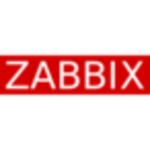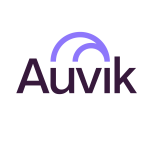What is our primary use case?
We primarily used the solution for routers and switches.
What is most valuable?
The "Performance Analyzer" feature is the solution's most valuable aspect. It's able to do the bounded graphs of all the interface stats, from errors to broadcasts and to current traffic. With a click of a button you're able to, in one interface, look at historical data for those items.
From the troubleshooting point of view, just having that peace of mind is great. I think it was kind of a neat feature they added. However, it obviously depends on who's using the platform. I use it as a troubleshooting tool mostly for historical data. That's kind of why I have a monitoring system. We rely heavily on that. We are supposed to be on 24/7 so if some resource is knocked out we can just do troubleshooting using historical data. Performance Analyzer was one of the core features I thought was pretty cool.
What needs improvement?
The idea that you can automatically trigger alerts from the TRAPS received is still something that still hasn't really taken off or worked properly. We have to manually go into the database and create SQL queries or SQL queries, to be able to match those and trigger those as alerts. On the engine itself, the Orion platform, just being able to receive the TRAP and generate the alert or something like an alert is a manual process.
We have all of these other networks that rely heavily on their own vendor protocol for monitoring, and then what the vendor has in place is just a place to be able to northbound, whatever it received to another server.
It becomes tricky when you're trying to, for example, dry contact monitoring for power, etc. Those are not necessarily your network, they're using dry contacts. Just analog. The vendor needs to get all the information, and then put it into a format that actually works to be able to be received by other networks.
Basically, it's just important to have some sort of TRAP alert generation. There's no point of us trying to do queries into the database.
For how long have I used the solution?
Before I joined my current company, I had been using SolarWinds for about six years.
What do I think about the stability of the solution?
The solution is extremely stable. We haven't had any issues in that regard. We haven't had issues with bugs, glitches, or crashes.
What do I think about the scalability of the solution?
In terms of scalability, there is room for improvement. When you start monitoring, if you have so many interfaces and you're trying to monitor them at a faster interval, or a shorter interval, you get to a point where you need to request another node.
If you have a router that has over 400 interfaces, you need a very robust server. If you don't you'll end up running into issues.
How are customer service and technical support?
I've never really reached out to technical support. I understand that it's alright. The very few times I've needed assistance, I was able to get some things from the SolarWinds page and their knowledge base. That's where almost everything you would need is found.
For the most part, I've not had issues that required me to go past their knowledge base. The other thing is, when people do try to reach out past the knowledge base, the support staff always bounce back with a question like "Hey, did you check the log?" It can be frustrating because obviously you've looked and that's why you're calling. Because the answer isn't there.
For the most part, they do a great job of having people share stuff on their knowledge base. Once you get access to that, most of what a general user would need is on there, if they running into something. The few times I've actually worked with support, it was in relation to something that was related to an enhanced feature. The experience, overall, I'd say has been okay.
How was the initial setup?
The initial setup is very straightforward.
It's easy. A user can download the file, then they simply click the installer and it provides simple step-by-step click-through style instructions. It's been very intuitive for the most part. Before installation, it's important to consider space requirements, resources for the server, etc. before jumping in. Users will also need to consider (if they're running netflow) whether to save the data on the email server or not. It's possible to run out of space that way, however. There are various guidelines, however, at the end of the day, the installation process isn't complex in and of itself.
What's my experience with pricing, setup cost, and licensing?
I no longer work at the company that uses Solar Winds, so I don't have information about what they were paying or what they pay now. The current package I'm using myself is a free package as I do a comparison between PRTG and SolarWinds.
Which other solutions did I evaluate?
We're in the process of doing a comparison between SolarWinds and PRTG.
What other advice do I have?
At my old company, we were always using the current version of the solution. We'd like to keep up to date with the latest releases. The company even changed over when there was a move from a 2012 Windows server to an updated version of Windows (16).
We had a single server located in one location and all the other devices were networked. Sometimes SolarWinds was used as a slot receiver and trap receiver for some of those devices that have their own "NMS" (network managed system). It's not really proprietary, but we had a northbound interface to be able to send syslogs or TRAPS. SolarWinds was used as the one central location to be able to receive and process alarms and alerts for any trigger actions.
I'd rate the solution eight out of ten. The solution is kind-of expensive, but at the end of the day, it's quite robust. It has several great functionalities. It has groups, maps, almost everything. It's just a matter of the price point that makes it somewhat prohibitive.
Disclosure: My company does not have a business relationship with this vendor other than being a customer.

















